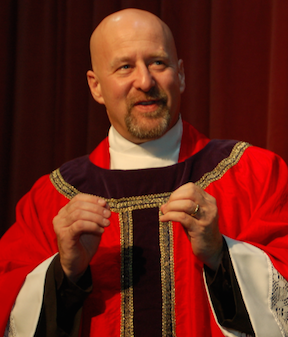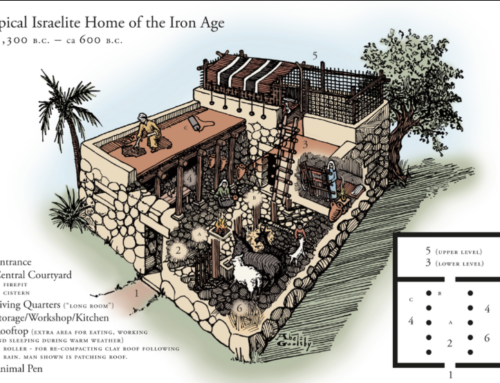Well of course I wasn’t invited to the Met Gala, but if I were, and if I were invited to give a little talk about Catholics and liturgical garb, here is what I would have said:
My Lords Ladies and Gentlemen of the Haute Couture, Haute Culture, the Haughty, the Naughty, the Hoity Toity and the Hoi Polloi,
It was the courtly bore Polonius who said “Clothes make the man” or words to that effect and Mark Twain elaborated by saying “Clothes make the man. Naked people have little or no influence on society.” Which brings me to Adam and Eve who, despite being naked, did have considerable influence on the course of human history.
“Clothes make the man”? perhaps. But it is more true to say that “Man makes the clothes.” This is something he has done from the very beginning when he and his wife stitched together fig leaves to cover themselves. In doing so they showed us the first and most basic reason for clothing–not to show off and not even to keep warm, but to be modest. Seeing some of the costumes here today, this is a truth we should perhaps be reminded of…
But this is not a sermon, a scolding or a sales pitch. It is a lecture at the launch of a magnificent exhibit of marvelous ecclesiastical couture. Here you will see some of the finest vestments and churchy clothes that clergy used to wear. I say “used to wear” because, alas, our Catholic clergy today are far more likely to dress down than to dress up. Out are the red pumps. In are the sturdy boots. Our are the outlandish hats. In are the bare heads. Oh yes, you can still find the odd biretta, saturno or galero, but these are as rare now as the powdered wig, the buckled shoe and the satin knee breeches of a bygone age. These splendid vestments are in a museum now because, although we are richer than we have ever been, our clothing is as impoverished.
We may have the wealth of kings and our homes are so luxurious that King Louis XIV would blush, but we wear torn jeans and T-shirts on purpose and even members of the English royal family wear not crowns, but baseball caps…backwards.
Why is this? Because in this egalitarian age we have the means to raise everyone up to the highest level of human aspiration but we have chosen instead to reduce everyone to the lowest common denominator–with the emphasis being on “common”.
Excuse me. I have fallen into a bad habit of mine…having a rant.
I really wanted to explain some ecclesiastical historical trivia that I think will amuse and educate you. Did you know why the Catholic vestments and altar hangings are in four different colors? Let me tell you.
The British scholar Margaret Barker explains that in the ancient Jewish temple there was a curtain that separated the Holy of Holies from the Holy Place. The Holy Place was where the priests performed sacrifices at the altar. The Holy of Holies was the room where the presence of the invisible God dwelt, and where the Ark of the Covenant (which you all will remember from the first Indiana Jones film) was placed. This curtain was woven with woolen and linen threads in four colors. The four colors were white, red, blue and violet, and they represented the four elements of the physical realm: Earth, Air, Fire and Water.
Violet represented the Water because the dye used for the rare violet hue came from the gland of a mollusk deep within the sea. Red stood for fire of course, White was the linen thread which came from flax which grew in the earth so white stood for earth and Blue stood for the sky and therefore the air.
The curtain was important liturgically and symbolically because it therefore represented the physical realm, and it stood between the real world and the invisible realities of the Holy of Holies.
Once a year the High Priest would go into the Holy of Holies to offer prayers. But the more important part of the ceremony was not his going into the Holy of Holies, but his emergence from the Holy of Holies. By the way, you might be interested to know that the priest had bells on the bottom of his vestments, and when he would go into the Holy of Holies he would have a rope tied around his ankle because if he went into the Lord’s presence with sin in his life he might be struck dead and as he was the only one who could go into the Holy of Holies no one could go in to retrieve the body. Therefore, after he went in if the bells stopped tinkling they would know that he was dead and they would use the rope to haul him out.
Anyway, that interesting detail aside, I have said all that about the curtain to say this: the priest’s vestments were also woven from the same four colors.
Why? because the ultimate lesson of the symbolism was in the emergence of the priest back through the curtain (which represented the physical realm) This symbolized the hope that one day the invisible God would come from the Holy of Holies–the invisible realm–and come to us through the physical realm. In other words, the invisible God would become visible. To put it another way, the invisible God would put on the physical. If you like, he would take human flesh.
This is what we call the incarnation. Through the Blessed Virgin Mary God’s son took human flesh. He came through the curtain and pitched his tent among us. This is what we celebrate through those beautiful scenes in which an angel appears to the young girl. At that point the invisible God begins to take human form, and does so as the most vulnerable of humans–an unborn child. By th way, this is why Catholics are so opposed to abortion–because it not only destroys a human life, it also destroys the kind of life through which God came into the world.
The priest coming through the curtain of four colors, wearing vestments of those four colors was a prophecy and a prediction of the hope that one day God would do just that, and this explains the line in one of those hymns you may remember which talks about Jesus and says he is “robed in flesh–the great High priest. Thou on earth both priest and victim, in the Eucharistic feast.
What does this have to do with the display of Catholic vestments? Well, you see this explains why Catholic priests wear vestments of four different colors. As I explained, we wear red, purple and white. The only problem is that the blue has evolved into green over the years.
But whenever I have new green vestments made I make sure they are lined with a nice blue color.
And that’s why.






Thanks for your info on the colors!! Learn something new from you everyday…:}